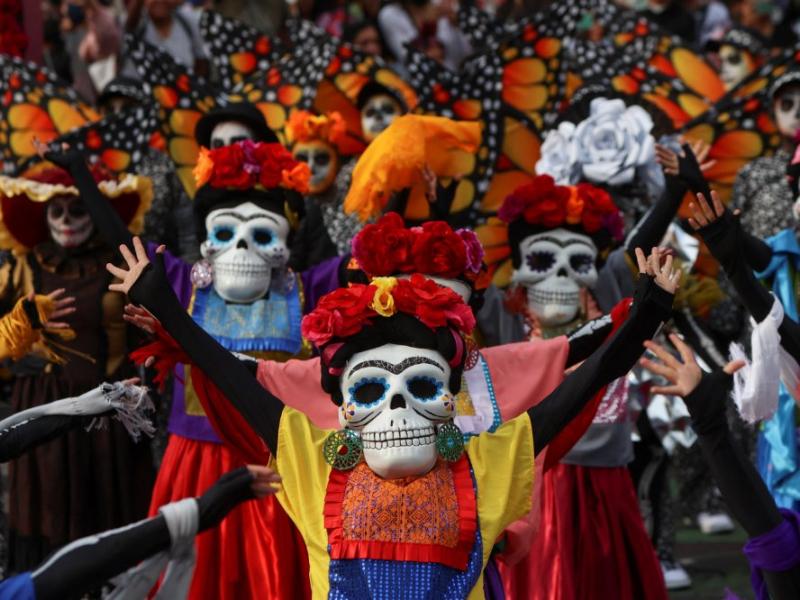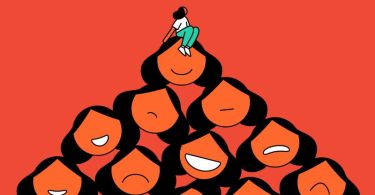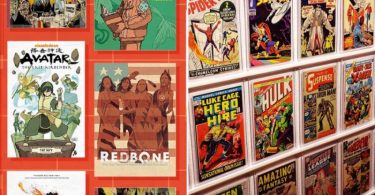Day of the Dead is celebrated on November 1 and 2, but other days, such as October 31 or November 6, may be included. It’s widely observed in Mexico, where it originated, and elsewhere, especially by Mexicans. Even though it is related to the Christian celebrations of Hallowtide, it has a much less sad tone and is seen as a happy holiday rather than a time of mourning. Family and friends gather for the multi-day holiday to remember the dead. These celebrations can be humorous as people recall funny memories of the deceased.
Traditions include honoring the deceased with calaveras and cempazchitl flowers, building ofrendas with the departed’s favorite foods and beverages, and visiting graves with these items as gifts. The celebration is not solely focused on the dead; it is also common to give candy sugar skulls to friends, share traditional pan de muerto with family and friends, and write mock epitaphs for living friends and acquaintances, known as calaveras literarias. UNESCO added the tradition to its list of intangible cultural heritage in 2008.
Mexican academics disagree on whether the festival has pre-Hispanic indigenous roots or is a 20th-century rebranding of a Spanish tradition developed under Lázaro Cárdenas to promote Mexican nationalism through a “Aztec” identity. In recent decades, the festival has become a national symbol and is taught in the nation’s schools.
Celebrations of Day of the Dead are held not only in Mexico but also in other countries, such the United States, Italy, the Philippines, and the Czech Republic, where the majority of the population is of Mexican descent. Festivals very similar to Day of the Dead are also celebrated in Belize, Bolivia, Brazil, Costa Rica, Ecuador, Guatemala, Peru, Southern Italy, and Sicily, sometimes on the same day as Day of the Dead and sometimes on separate days. The Yucatec Maya of Belize refer to their holiday as “Food for the Souls,” while the people of Bolivia call their celebration “Day of the Skulls,” the people of Brazil refer to their holiday as “Day of the Dead” or “Day of the Faithful Deceased,” and the people of Costa Rica refer to their holiday as “All Saints Day” and “All Souls Day.”
Day of the Dead History & Controversy
People have different ideas about whether the celebration has native pre-Hispanic roots, is a more modern version of an old European tradition, or is a mix of both. This is an example of syncretism. Celebrations of All Saints’ Day and All Souls’ Day, both of which date back to the Middle Ages, are held simultaneously on the same days in some parts of the world, such as Spain and Southern Europe. Even though pre-Columbian Mexico had traditions that honored the dead, critics of the native American origin argue that modern depictions of the celebration have more in common with European traditions of Danse macabre, which use allegories of life and death personified in the human skeleton to remind us of the transience of life. In the last few decades, however, academics in Mexico have become more and more skeptical of this idea, even going so far as to call it a politically motivated lie. In the context of her larger study of changing perspectives on death and illness in Mexico over time, historian Elsa Malvido was the first to do so at the Mexican INAH, where she also established the Taller de Estudios sobre la Muerte. Malvido rejects a native or syncretic origin, arguing the tradition is from medieval Europe. Similar traditions exist on the same day in Spain, Catholic Southern Europe, and Latin America, such as altars for the dead, skull-shaped sweets, and bone-shaped bread.
In Arqueologa Mexicana, Agustin Sanchez Gonzalez shares a similar view. Gonzalez says that even though the “indigenous” story became the dominant one, the spirit of the celebration has a lot more in common with the European tradition of Danse macabre and its allegories of life and death acted out by a human skeleton to show how short life is. He also points out that the press of the 19th century didn’t talk much about the Day of the Dead as we know it today. Long funeral processions ended in drunkenness. Elsa Malvido also notes that the practice of “velar,” or keeping vigil with the dead, has a relatively recent history. It was caused by Benito Juarez’s Reform Laws, which took family pantheons out of churches and put them in public cemeteries. Rich families had to hire servants to watch over family possessions displayed at altars.
Ricardo Pérez Montfort has shown how indigenismo became linked to post-revolutionary official projects while Hispanismo was linked to conservative political stances. This exclusive nationalism started to push out all other cultural views to the point where, in the 1930s, the Aztec god Quetzalcoatl was promoted by the government as a replacement for the Spanish Three Kings tradition, with a person dressed as the god giving gifts to poor children. Lázaro Cárdenas’s leftist government was inspired by “indigenismo” and left-leaning anti-clericalism, and it began to officially separate the Day of the Dead from the Catholic Church at that time. Malvido goes so far as to call the celebration a “Cardenist invention” because the Catholic parts are taken out and the focus is on indigenous iconography, death, and what Malvido thinks is the cultural invention of how Mexicans respect death. Gonzalez says that Mexican nationalism led to a variety of cultural expressions that have a touch of tradition but are really just social creations that eventually took on ancestral tones. Catholic Da de Muertos adopted elements of an ancient pagan rite in the 20th century.
La Calavera Catrina by José Guadalupe Posada is a key element of the redeveloped festival. Gonzalez says that even though Posada is seen as the “restorer” of Mexico’s pre-Hispanic culture today, he never cared about Native American culture or history. Posada was primarily interested in drawing frightening images that are much more similar to those of the European Renaissance or to the horrors painted by Francisco de Goya during the Spanish war of independence against Napoleon than to the Mexica tzompantli. The recent transatlantic connection can also be seen in the use of couplets in allegories of death and in the play Don Juan Tenorio by the Spanish writer José Zorrilla, which has been performed in Spain and Mexico on this date since the early 1800s because it has ghosts and scenes in a cemetery.
Different points of view say that, despite the obvious European influence, there is evidence of pre-Columbian celebrations that were very similar in spirit. For example, the Aztecs had at least six celebrations that were very similar to Day of the Dead. Quecholli, which honored Mixcóatl, the god of war, and was held between October 20 and November 8, is the one that comes closest to Day of the Dead. This celebration included placing food (tamales) on altars near warriors’ graves to help them in the afterlife. Influential Mexican poet and Nobel laureate Octavio Paz supported the syncretic view of Da de Muertos as a continuation of ancient Aztec festivals celebrating death, as seen in his 1950 essay “All Saints, Day of the Dead.”
Regardless of its origin, the festival has become a national symbol in Mexico and is taught in schools, usually with a native origin. It’s a national holiday too. Day of the Dead traditions and activities vary by town. In Pátzcuaro, Michoacán, the tradition is different if the deceased is a child. On November 1, after a child’s death, the godparents set a table with sweets, fruits, pan de muerto, a cross, a rosary (used to ask Mary to pray for them), and candles. This honors and celebrates the child’s parents. In the town plaza or garden, there is colorful dancing with skull-shaped and devil masks. At midnight on November 2, people light candles and ride winged boats called mariposas (butterflies) to Janitzio to honor and celebrate the dead there.
In contrast, Ocotepec, north of Cuernavaca in Morelos, opens its doors to visitors in exchange for veladoras (small wax candles). Visitors get tamales and atole. Only house owners with a recent death do this. Many locals arrive early to eat for free and admire the elaborate altars. Boys and young men dressed as grandfathers dance La Danza de los Viejitos (the Dance of the Old Men). The opening scene of the James Bond movie Spectre from 2015 shows a Day of the Dead parade in Mexico City. A year later, on October 29, 2016, federal and local authorities decided to organize a real Da de Muertos parade through Paseo de la Reforma and Centro Historico, and 250,000 people attended. At the time, no such parade took place in Mexico City, but interest in the film and the government’s desire to promote the Mexican culture led to the decision. This could be an example of what is called the “pizza effect.” The Disney Pixar film Coco popularized the idea of a huge celebration.
Day of the Dead traditions include building private altars with the departed’s favorite foods, drinks, photos, and memorabilia. The goal is to encourage soul visits so they can hear prayers and words from the living. These altars are often placed at home or in public spaces like schools and libraries, but people also visit cemeteries to place them next to tombstones. During the festivities, both living people and their ancestors’ spirits eat food as offerings. Tamales are a popular dish for both celebrations. The skull, or “calavera” in Spanish, is a common symbol of the holiday. People show this symbol with masks called “calacas,” which means “skeleton,” and with foods like chocolate or sugar skulls that have the name of the recipient written on the forehead. Sugar skulls are gifts for the living and dead. Pan de muerto is a sweet egg bread shaped like skulls and decorated with white frosting to look like bones. In some areas, particularly in the larger cities, children in costumes can be seen asking passersby for a calaverita, a small gift of candies or money, or knocking on doors to receive the same. This is similar to trick-or-treating in the U.S., but without the mischief if no treat is given. People write short poems in traditional rhyming verse for this holiday. These poems are called “calaveras literarias,” which means “literary skulls.” They are mocking, light-hearted epitaphs usually written about friends, classmates, co-workers, or family members (living or dead), but they can also be written about public figures or historical figures. They describe interesting habits and attitudes, as well as funny or absurd stories that use death-related imagery.






